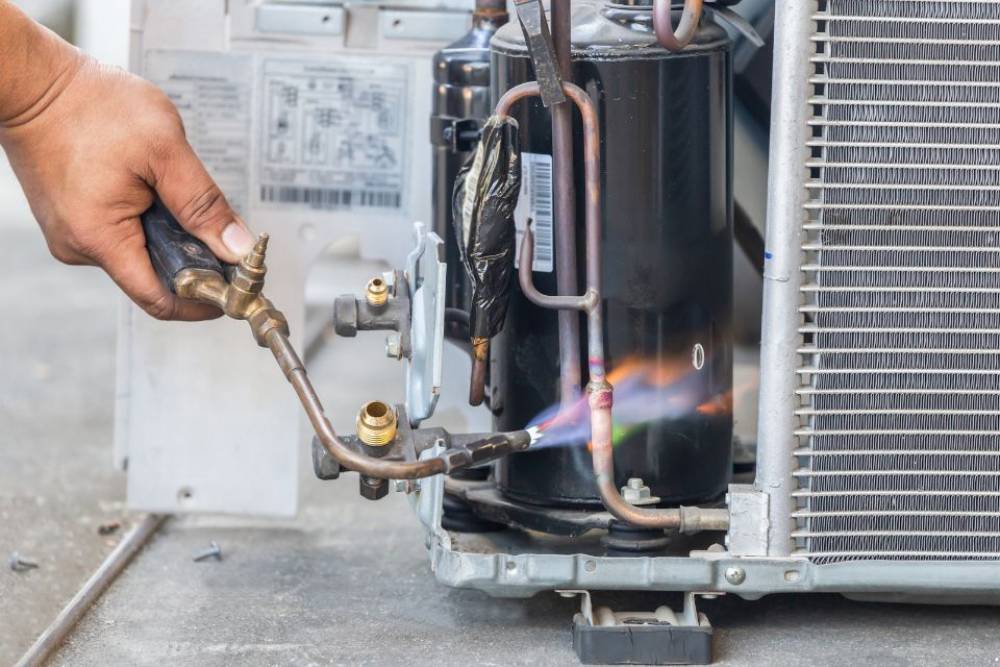
Why DIY HVAC Repairs Can Be Risky Without A Professional Contractor
HVAC systems play a crucial role in keeping homes comfortable year-round. However, many homeowners consider handling repairs themselves when these systems malfunction to save money and time. While the DIY approach may seem tempting, HVAC systems are intricate, involving complex electrical, mechanical, and refrigerant components. Attempting repairs without proper knowledge, tools, or experience can lead to unintended consequences, ranging from personal safety hazards to long-term system damage. We will explore why DIY HVAC repairs pose risks, the importance of Price Heating & Air Conditioning involvement, and how skipping professional services can cost more than it saves.
Complexity of HVAC Systems Requires Proper Knowledge
HVAC systems are far more complicated than many homeowners realize. They consist of interconnected components, including compressors, condensers, fans, and electrical wiring, which must work harmoniously to regulate indoor temperature effectively. Unlike basic household repairs, HVAC maintenance demands in-depth knowledge of how these components interact. A small error, such as reconnecting wires improperly or tampering with the wrong part, can cause the entire system to fail. For example, a homeowner attempting to replace a blower motor may inadvertently damage adjacent wiring or components, exacerbating the problem. This level of intricacy makes DIY repairs risky, as HVAC systems require technical precision that only trained contractors possess.
Additionally, HVAC units operate under specific performance standards, and any miscalibration can reduce efficiency. For instance, improper refrigerant levels or poorly adjusted airflow can result in uneven cooling or heating, causing discomfort and high utility bills. HVAC professionals are equipped with tools like pressure gauges, refrigerant analyzers, and diagnostic software that allow them to pinpoint problems accurately. Homeowners may rely on guesswork without these tools, leading to partial fixes or entirely new issues. The complexity of HVAC systems highlights the importance of relying on trained professionals rather than risking faulty DIY solutions.
Personal Safety Hazards During HVAC Repairs
Safety risks are among the most significant reasons for avoiding DIY HVAC repairs. HVAC systems involve electrical components, sharp metal edges, and refrigerants, each of which poses specific dangers. Electrical wiring is particularly hazardous, as improper handling can result in electrical shocks, which can be fatal in severe cases. For instance, replacing a capacitor or fixing a faulty wiring connection without turning off the power supply exposes individuals to high-voltage currents. Even a minor slip-up can have severe consequences for someone untrained in electrical safety protocols.
Refrigerants used in HVAC systems, such as R-22 or R-410A, are also dangerous when mishandled. These substances operate under pressure and can cause frostbite or respiratory issues if they come into contact with skin or are inhaled. Furthermore, refrigerant leaks harm the environment and can deplete the ozone layer, making safe handling critical. HVAC contractors undergo specific training to handle refrigerants safely and adhere to environmental and safety regulations. Without this training, homeowners risk injuring themselves or causing accidental environmental harm.
Physical injuries are another concern. HVAC systems often have sharp edges, heavy components, and confined spaces that increase the likelihood of cuts, bruises, or back injuries. For example, attempting to lift or remove a furnace part without proper support can strain muscles or cause long-term injury. The lack of safety equipment, such as gloves, goggles, or respirators, further compounds these risks. Safety should always be prioritized over cost savings, and attempting HVAC repairs without professional assistance can result in personal harm that far outweighs the initial repair expense.
Costly Long-Term Damage from DIY Mistakes
While DIY repairs are often driven by a desire to save money, they can lead to costlier problems down the line. With a thorough understanding of HVAC systems, homeowners can avoid making errors that may seem small initially but cause significant damage over time. For example, using incorrect parts or tools can compromise system performance. A homeowner replacing a thermostat without properly calibrating it may inadvertently cause the HVAC system to run inefficiently, resulting in higher energy bills. These inefficiencies also increase wear and tear on the system, shortening its lifespan and requiring costly replacements sooner than anticipated.
Improper refrigerant handling is another common issue in DIY repairs. HVAC systems depend on precise refrigerant levels to function correctly; even minor errors can disrupt the system's performance. Overcharging or undercharging refrigerant reduces efficiency and can damage the compressor, one of the most expensive components to replace. Additionally, refrigerant leaks caused by poor installation can escalate into major system failures, leading to significant repair costs that far exceed the price of hiring a professional contractor.
Furthermore, DIY repairs often result in incomplete or temporary fixes that fail to address the root cause of the problem. For instance, a homeowner patching a duct leak without inspecting the entire duct system may miss underlying issues like mold growth or insulation damage. Professional contractors perform comprehensive inspections, identifying problems that might take time to be apparent. Addressing these issues upfront prevents small problems from escalating into costly repairs. Attempting DIY repairs may save money initially, but the risks of long-term damage can result in far higher expenses.
Attempting DIY HVAC repairs without professional assistance can pose significant risks, including personal injury, long-term system damage, and regulatory violations. HVAC systems are complex, requiring technical knowledge, proper tools, and adherence to safety standards to ensure safe and effective repairs. While DIY approaches may appear cost-effective initially, mistakes can lead to higher expenses, voided warranties, and safety hazards. By relying on professional contractors, homeowners can ensure their HVAC systems are repaired correctly, efficiently, and in compliance with safety regulations. Prioritizing professional involvement is a safer and more reliable solution for maintaining HVAC systems and preserving home comfort.

